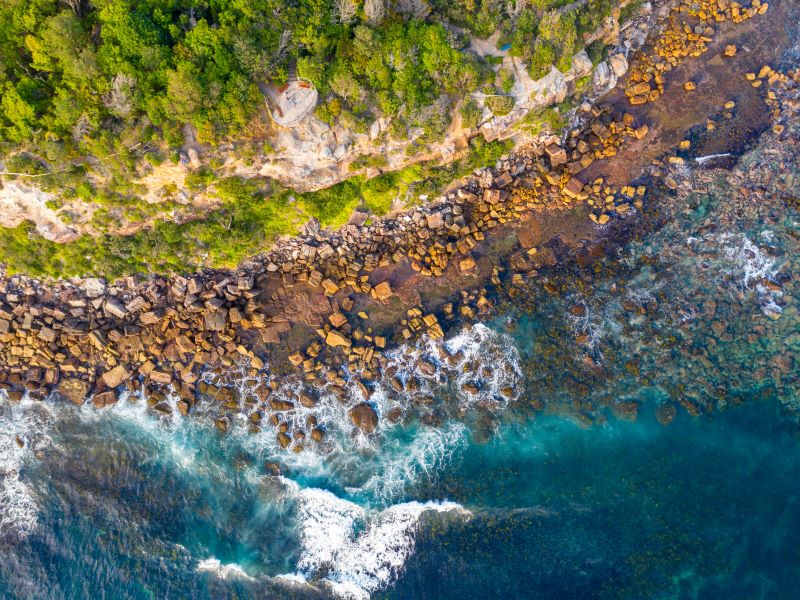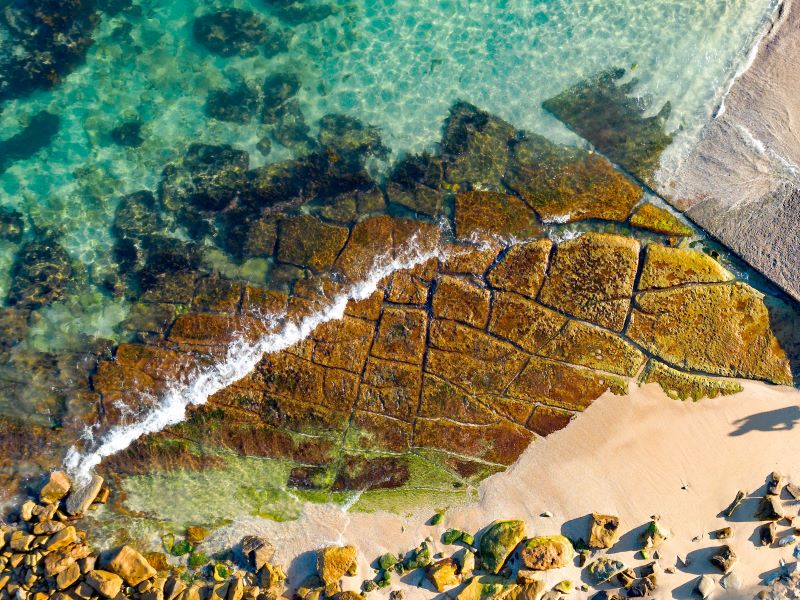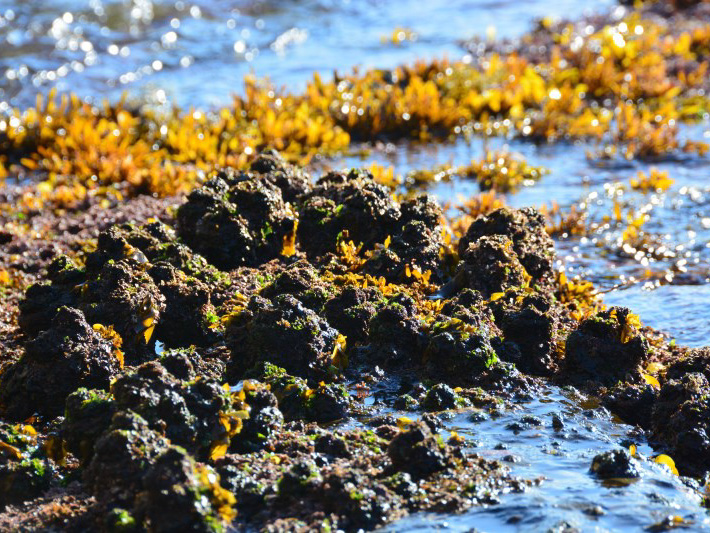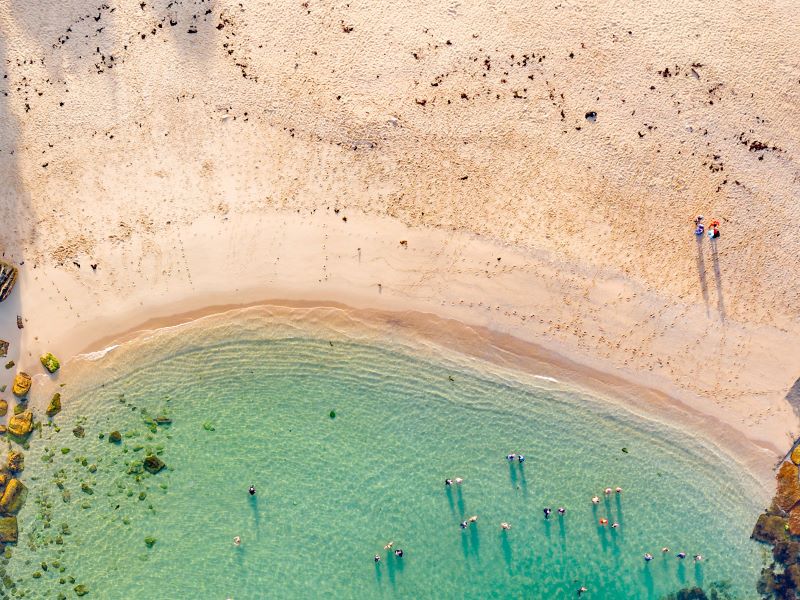
Habitats of the intertidal zone
The intertidal zone is further split into three zones – upper, middle and lower – based on the length of time the shore is covered by the tide.
Intertidal habitats in Cabbage Tree Bay Aquatic Reserve include beaches and the various habitats found on rocky shores.
The animals and plants living here must survive temporary exposure to the air and sun, varying salinity, and the forces of breaking waves.
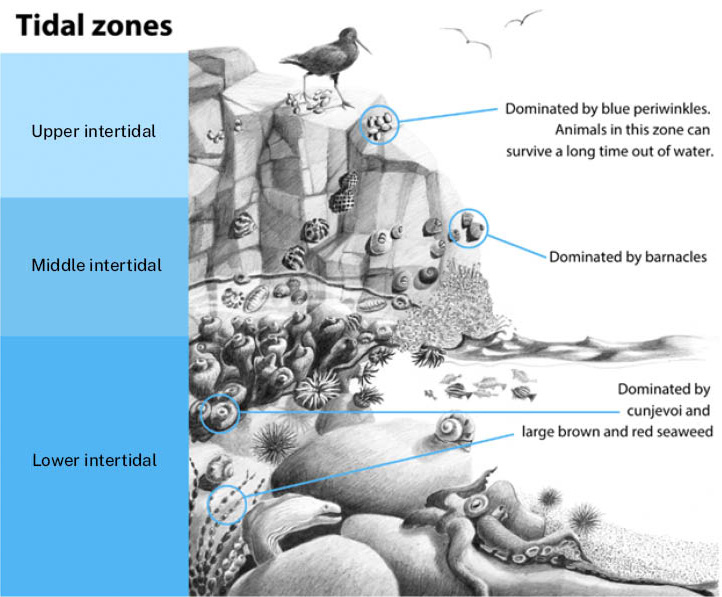
Illustration – Anne Willman
The marine life changes as you move upslope away from the ocean.
- Upper intertidal – animals here can survive a long time out of water, such as blue periwinkles.
- Middle intertidal – animals here are mostly grazing molluscs such as limpets and zebra shells.
- Lower intertidal – brown, red and green algae and filter-feeding animals such as cunjevoi occur here.
The rock underlying and surrounding Cabbage Tree Bay Aquatic Reserve is Hawkesbury sandstone, which has been eroded over time by wind and waves.
The result is cliffs, boulder fields, cobbles and rock platforms with rockpools, cracks and crevices. This wide range of features provide different habitats where animals and plants live.

